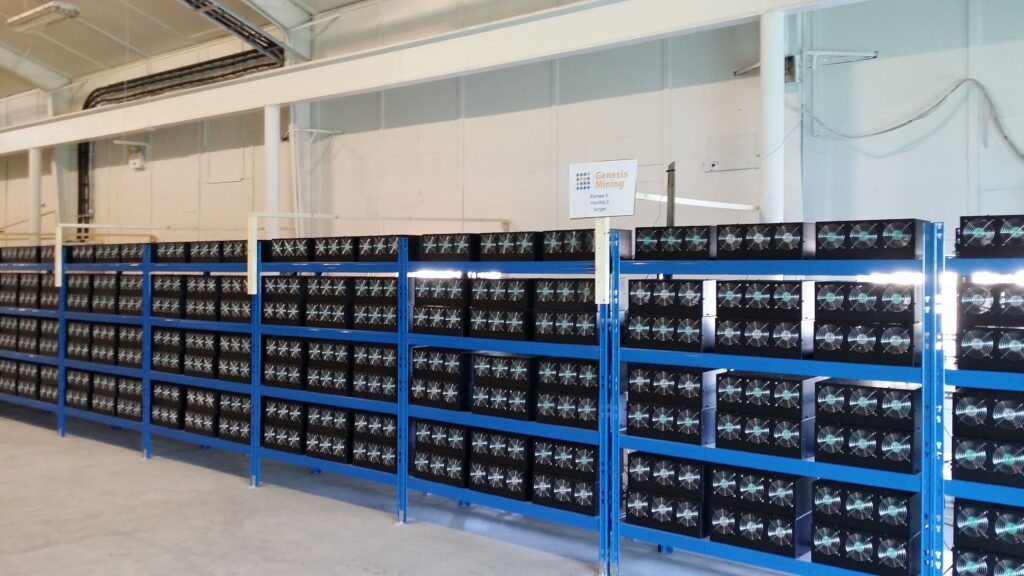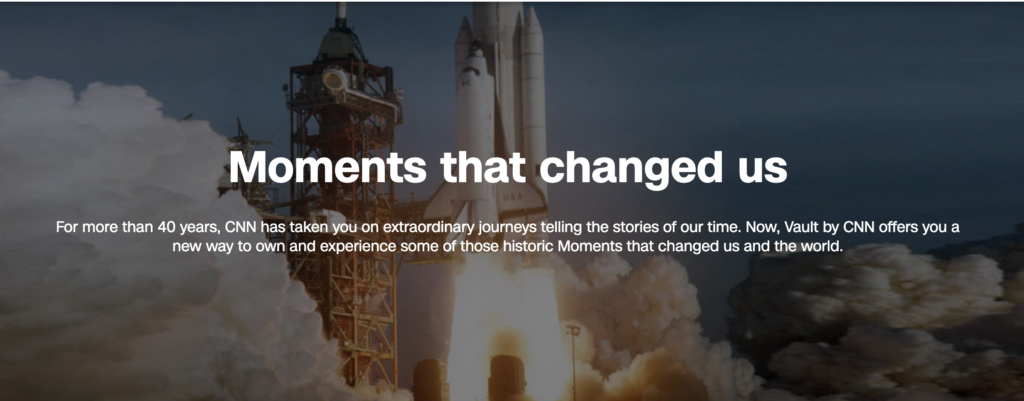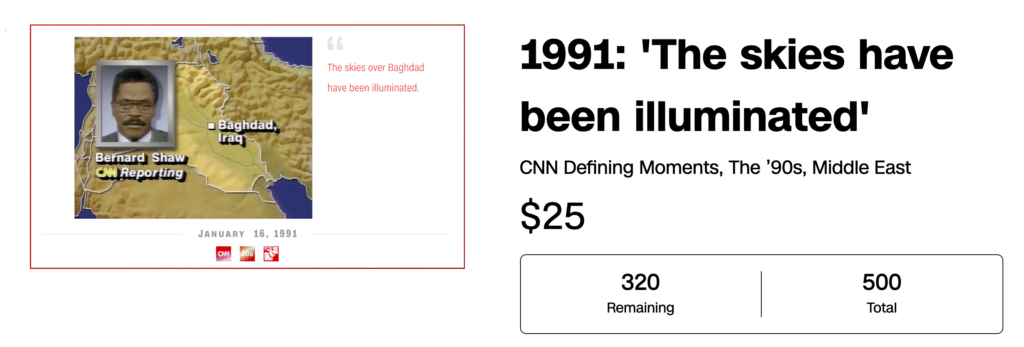Art Imitates LIFE, NFT verifies ART: Walter Benjamin and Vault by CNN
Andy fischer Wright / University of Texas at Austin

From the companies that grade and authenticate Pokémon cards facing new and overwhelming demand to artist Lil Nas X staging a sneaker drop to coincide with his music video Montero, objects branded on their rareness and collectability have become a point for renewed discussion of late. The desire to collect individual media objects is hardly a new one, but at the heart of this recent trend in digital media is a highly lucrative format turned cultural touchstone known as a Non-Fungible Token, or NFT for short.
It is difficult to say what exactly an NFT is because the core principle behind its current manifestation is primarily an accelerated form of ownership. Maybe the closest physical analogue is a certificate of authenticity that is intended to verify a physical object is in fact what it represents itself as based on some sort of expert opinion or historical fact. For instance, a signed baseball might come with a certificate from a person or entity accepted as knowledgeable that the event which gave the horsehide its unique value happened when, where, and by whom it so claims. Without this stamp of approval, it is more difficult to convince another party of an object’s provenance. There are a few significant differences between an NFT and a paper voucher, but the key variances are that NFTs are usually associated with digital works (examples include tweets, digital models, and video art) and that an NFT’s uniqueness is verified not by an expert but through the computational horsepower of a blockchain (for instance, that of the cryptocurrency Ethereum.) The unique token (“T” in NFT) here acts to verify the work of art because of its connection with calculated certainty: it is virtually impossible to duplicate the token exactly, and therefore the digital object is authentic by association.
As many advocates for the technology can and will tell you, the NFT can be thought of as a way to connect digital art to the labor of its creator. There are some benefits to this that Anil Dash wrote about in an article criticizing the current state of NFTs. Dash himself co-developed an early form what might now be considered an NFT in 2014, which gave an artist the ability to sell their digital work to a buyer. Dash is also quick to note that modern NFTs have led to a crisis of the opposite sort where artists have had NFTs associated with their art without their consent or ownership. This potential benefit is pitted against the major material detriments that have come with the rise of NFTs, including the energy cost that many blockchains rely upon (for instance, a proof-of-work blockchain like Bitcoin, which has roughly the same rate of energy consumption as a small country ) and potentially rogue cyberlibertarian ideology that has been associated with unregulated cryptocurrency.
Because of the massive prices that artists like Beeple have been able to draw for their NFT sales, much of the press coverage has been on sales that amount to exceptional displays of wealth in the style of fine art collection. However, paying the equivalent of millions of dollars in cryptocurrency to “own” a tweet or a widely accessible .GIF is not within the realm of possibility for most people. The more interesting phenomenon that has begun to appear is large media organizations selling or preparing to sell NFTs targeting the average consumer, especially NFTs tied not to art but to real-world events. A prime example of this that warrants more investigation is Vault by CNN.

The Vault platform was launched earlier this year and allows visitors to buy an NFT corresponding to historical footage aired on the network during major news events. These limited-run NFTs come as drops ranging from 500 to 1000 copies, and the events can be anything from footage of the US military bombing Baghdad in 1991 to Ted Turner’s speech establishing CNN as an entity to the moments CNN called the presidential races for both the 45th and 46th President. On their landing page, Vault claims to unlock “a new way to own and experience some of those historic Moments that changed us and the world” starting at the more reasonable cost of $20-$25 payable by credit card. As of this writing, every drop has sold quickly; the latest drops associated with CNN announcing Trump’s victory in 2016 and Biden’s victory in 2020 both sold through 1000 copies respectively within a week, including just under fifty $500 limited edition copies that come with a physical playback system that sold out within 36 hours.
While these “Moments” can be viewed as just another media company monetizing the demand for their extensive back catalogue by licensing it, there is something interesting about the way these Moments connect notions of authenticity, nostalgia, and private property. On an FAQ page speckled with buzzwords, Vault claims that Moments offer a similar experience to collecting printed media with the added benefit that collectors may also “track those Moments to verify authenticity.” The implication here seems to be that the NFT is tied to the event in question in some way that a printed headline never can be, both emotionally and in trade value. Consumers are thereby urged to collect “Moments that mean something to them, whether reliving an iconic event or finding a personal connection to a Moment in time.”
Perhaps we can locate some of what drives this bizarre tension in Walter Benjamin’s 1935 essay Art in the Age of Mechanical Reproduction, specifically the inscrutable ritualistic connection between a person viewing a work of art and the meaning that the art is supposedly imbued with by its distinctive form Benjamin calls the “aura.” At a time when all forms of media were becoming increasingly accessible through reproduction and distribution, Benjamin wrote his famous line: “that which withers in the age of mechanical reproduction is the aura of the work of art” (4). Given this definition, it appears impossible to keep the aura alive past the moment of performance, and unfeasible for a digitally distributed work ever to have an aura in the first place.
It’s easy to get lost in the language and mistake Benjamin’s piece as an elegy for the aura. However, Benjamin goes on to detail an opportunity for democratization of meaning, where “mechanical reproduction emancipates the work of art from its parasitical dependence on ritual” (6) and allows for interpretation outside of “the realm of ‘beautiful semblance’” (11). Reproduction is conceptualized here as a way of skirting gatekeepers of taste at the level of access, providing works to the public without relying on the original piece’s limitations. Escaping the cult of beauty intimated in the aura widens the level of interpretations possible in spectatorship, as we have seen in how widespread access and viral sharing have become fundamental tenets of participatory culture (and frankly, large parts of everyday life in a networked society.)
But Benjamin points out that with the withering of the aura came a corporate tendency to preserve the facsimile he calls the “phony spell of the commodity” artificially built up by the distributor of the work of art to replace the ability for the artist (specifically, a film actor) to authentically impact their audience (12). Here the rough comparison to a Moment becomes clearer. Under the guise of owning an artifact that possesses a connection to a historical and potentially sentimental event, what is actually purchased is a link to a digital token associated with footage of CNN covering the event unique due to its non-fungibility. The only truly authentic nature of the Moment is that no one else may own it, making it nothing more than hypercapitalist fugazi imbued with cable news rhetoric.

Despite claims that the NFT bubble has burst, consumer-level NFTs sold by large media companies will surely be around for the foreseeable future. In recent months, the South China Morning Post announced they will be releasing NFTs similar to Vault’s model named “Artifacts,” Marvel has announced a run of digital collectibles tied to NFTs, and Fox Entertainment announced a $100 million creator fund managed by their NFT-focused subsidiary, Blockchain Creative Labs. Surely there will be a market for NFTs as well, even if it is a niche market. Whether or not there will be more that play into the same ideas as Vault remains to be seen.
Image Credits:
- A farm in Iceland showing rows of computers used to mine cryptocurrency. Wikipedia.
- A screenshot from the landing page of Vault by CNN. We see a space shuttle launching in the background with foreground text detailing this “new way to own and experience” historic events.
- A screenshot of the “Moment” associated with the bombing of Baghdad that marked the beginning of the Gulf War in 1991. The still image on the left is a video player that shows a 77-second clip of anchors speaking about the bombing. Note that the title emphasizes the anchors’ commentary rather than the impact or fallout of American military involvement in Iraq. Screenshot recorded on day of release: June 30th, 2021.
Benjamin, Walter. “The Work of Art in the Age of Mechanical Reproduction.” Illuminations, Schocken Books, 1969, pp. 217–51.
Thanks for this timely article. From the view of preservation and archival memory, NFTs seem to parallel the library ethos of LOCKSS [lots of copies keep stuff safe] by distributing throughout the network many copies of digital texts. Unlike LOCKSS, however, the point of NFTs is not to freely disseminate copies to preserve access in perpetuity, but to ensure the fetish of commodity via the principle of scarcity maintains the longevity of the NFT.
Thanks for the supportive comment, Daniel! You bring up a really interesting point with the idea of LOCKSS (which is new to me!) I think you nicely differentiate the security of preserving a work for its content vs. the security of preserving a record of ownership rights. This core tension between possession and distribution is a conflict that your comment has helped me to more fully consider.
News producers have moved in a more ethical direction in the last twenty years, but there will always be more work to do.
Pingback: NFTs are disrupting collector culture. But fans aren't buying it. - Synergy Integration Advisers
Pingback: NFTs are disrupting the music industry. But fans aren’t buying it. | NFTSWAGG
Pingback: NFTs are disrupting the music industry. But fans aren’t buying it.
Pingback: NFTs are disrupting the music industry. But fans aren't buying it. - NFT Travel Gazette
Pingback: NFTs are disrupting the music business. However followers aren't shopping for it. - CryptoCompass
Pingback: NFTs are disrupting collector culture. But fans aren’t buying it. – TIF News
Pingback: NFTs are disrupting the music industry. But fans aren’t buying it. – Mashable – Darkside NFT
Pingback: NFTs are disrupting the music industry. But fans aren’t buying it. - Bitcoins Inc
Pingback: NFTs are disrupting collector culture. But fans aren't buying it. - Nzuchi Times Mashable News
Pingback: NFTs are disrupting the music industry. But fans aren’t buying it. – Advertising and Marketing Plant
News producers have moved in a more ethical direction in the last twenty years, but there will always be more work to do.
Perhaps we can locate some of what drives this bizarre tension in Walter Benjamin’s 1935 essay Art in the Age of Mechanical Reproduction, specifically the inscrutable ritualistic connection between a person viewing a work of art and the meaning that the art is supposedly imbued with by its distinctive form Benjamin calls the “aura.” At a time when all forms of media were becoming increasingly accessible through reproduction and distribution, Benjamin wrote his famous line: “that which withers in the age of mechanical reproduction is the aura of the work of art” (4). Given this definition, it appears impossible to keep the aura alive past the moment of performance, and unfeasible for a digitally distributed work ever to have an aura in the first place.